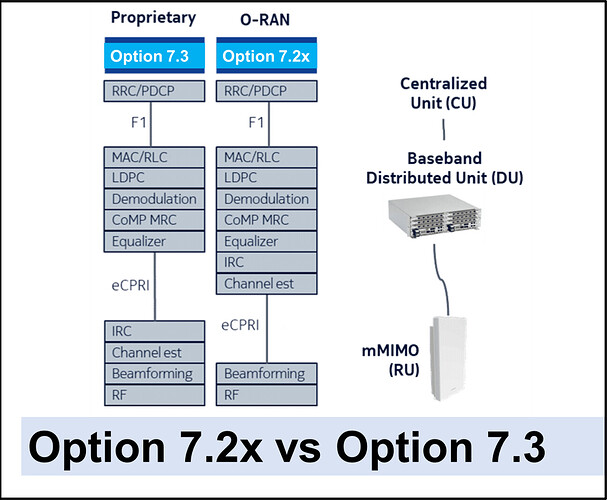-
My friend: Hi Ibrahim, I have a question for you.
- Me: Please, tell me.
-
My friend: I was wondering why option 7.2x was used in Open RAN and not option 7.3?
- Me: Actually, Option 7.2x was adopted by O-RAN Alliance to be used in Open RAN as a lower layer split solution instead of option 7.3 and to understand why this was decided, we need to understand the difference between option 7.2x and option 7.3.
-
My friend: So, what are the differences between option 7.2x and option 7.3?
- Me: Both option 7.2x and option 7.3 are having split at the physical layer, but the difference is that functions such as channel estimation and IRC (Interference Rejection Combining) are implemented inside the DU in option 7.2x, while they are implemented inside the RU in option 7.3 (please, check the below snapshot). So, although this makes option 7.3 bring lower fronthaul BW requirements as more functions will be done inside the RU and also higher performance compared to option 7.2x due to channel estimation is done inside the RU, but unfortunately option 7.3 requires powerful chips in the RU resulting in a higher cost RU relative to option 7.2x, also option 7.3 yields a more complex interface than option 7.2x and possibly more difficulties in multi-vendor integration.
-
My friend: Then, option 7.2x was selected, right?
- Me: Yes, as option 7.2x is the result of a compromise between the RU complexity and cost versus the fronthaul BW requirements when shifting functions from the DU towards the RU. So, we can say that option 7.2x is the best trade-off between superior performance, fronthaul BW requirements, and the RU complexity.
-
My friend: Thank you very much, you made it very clear.
- Me: You are most welcome.
LinkedIn:
